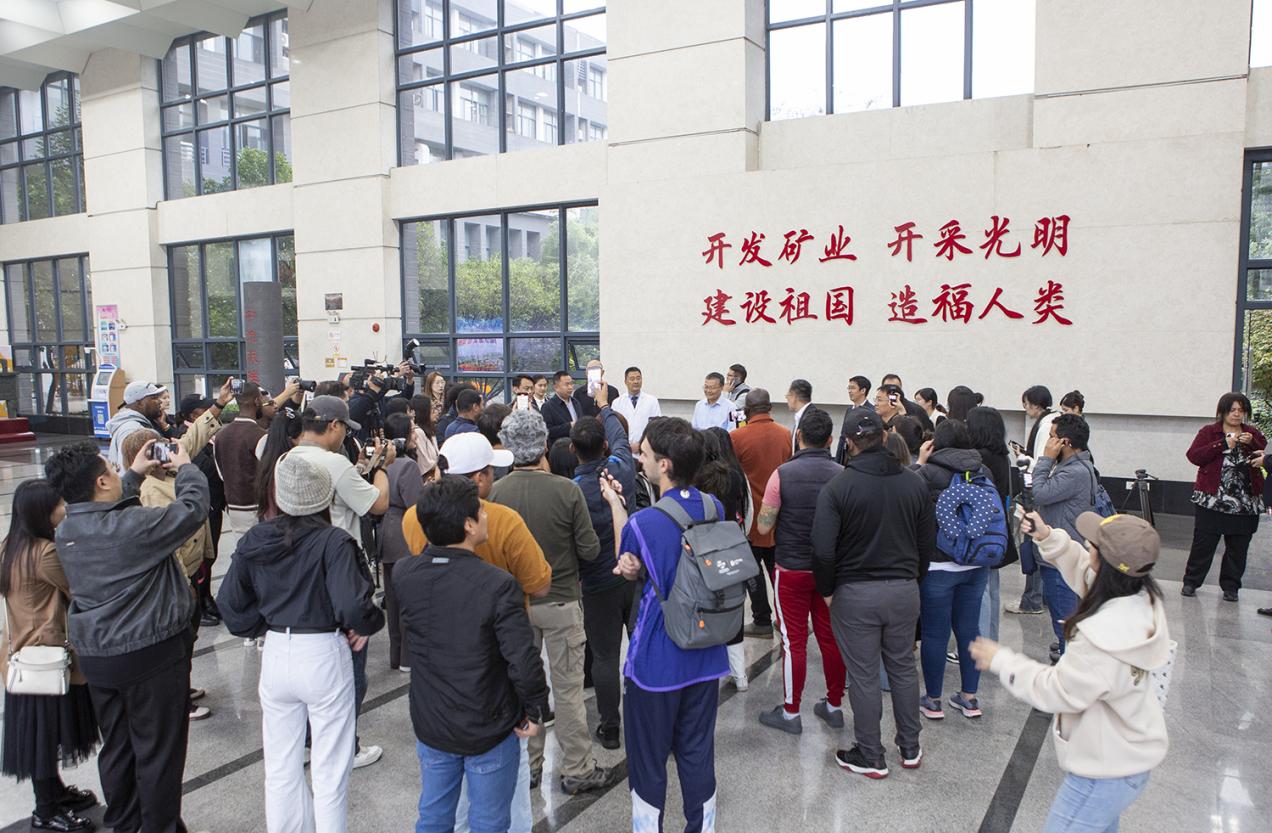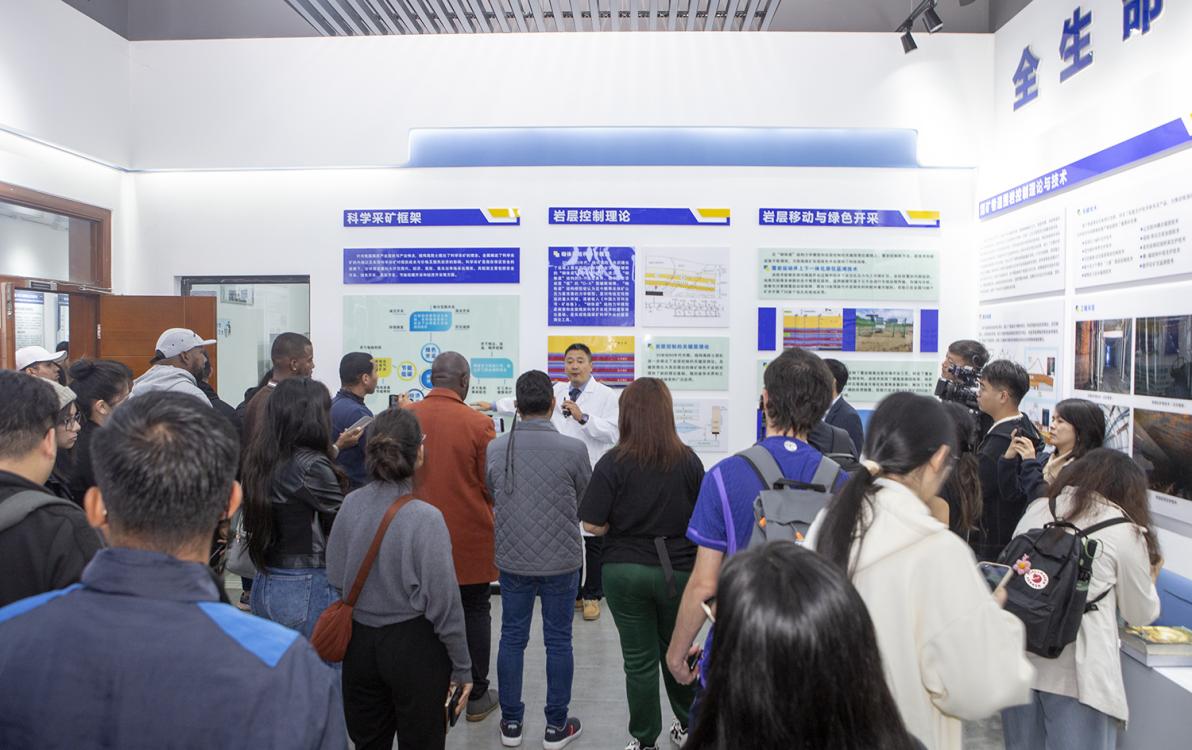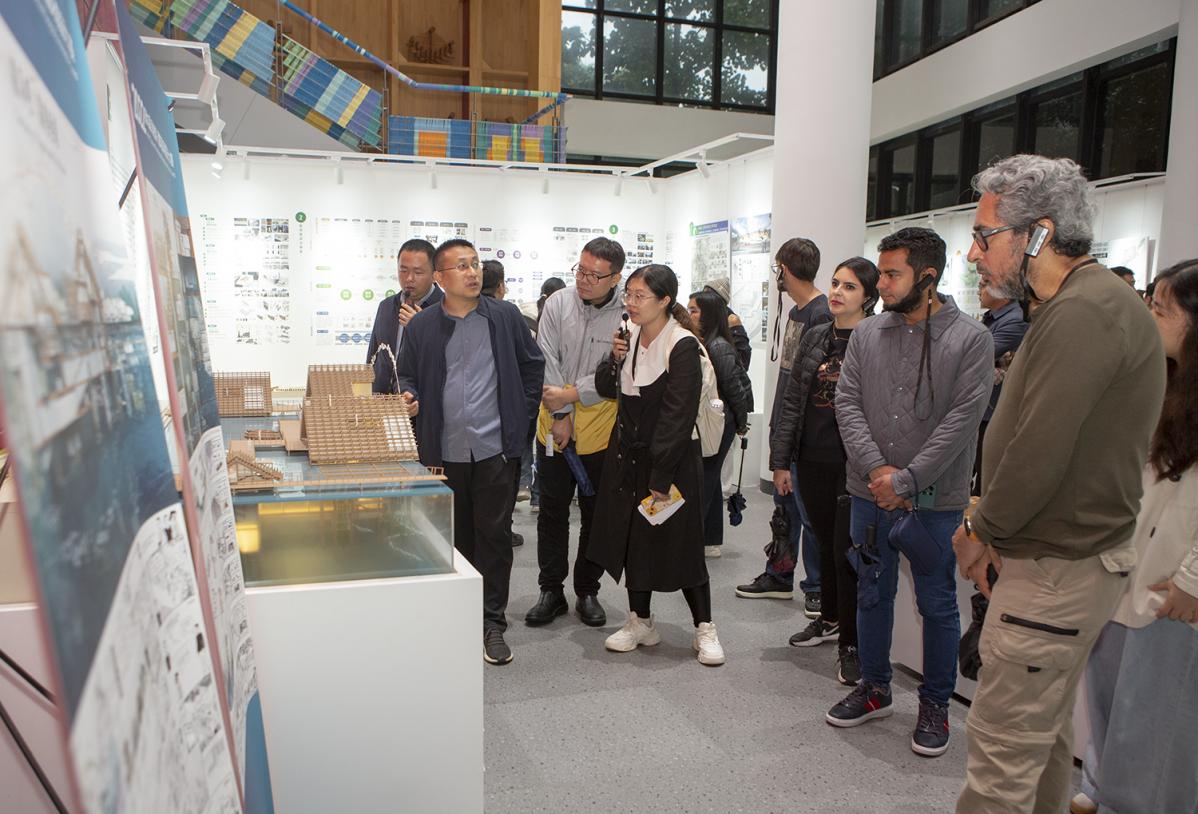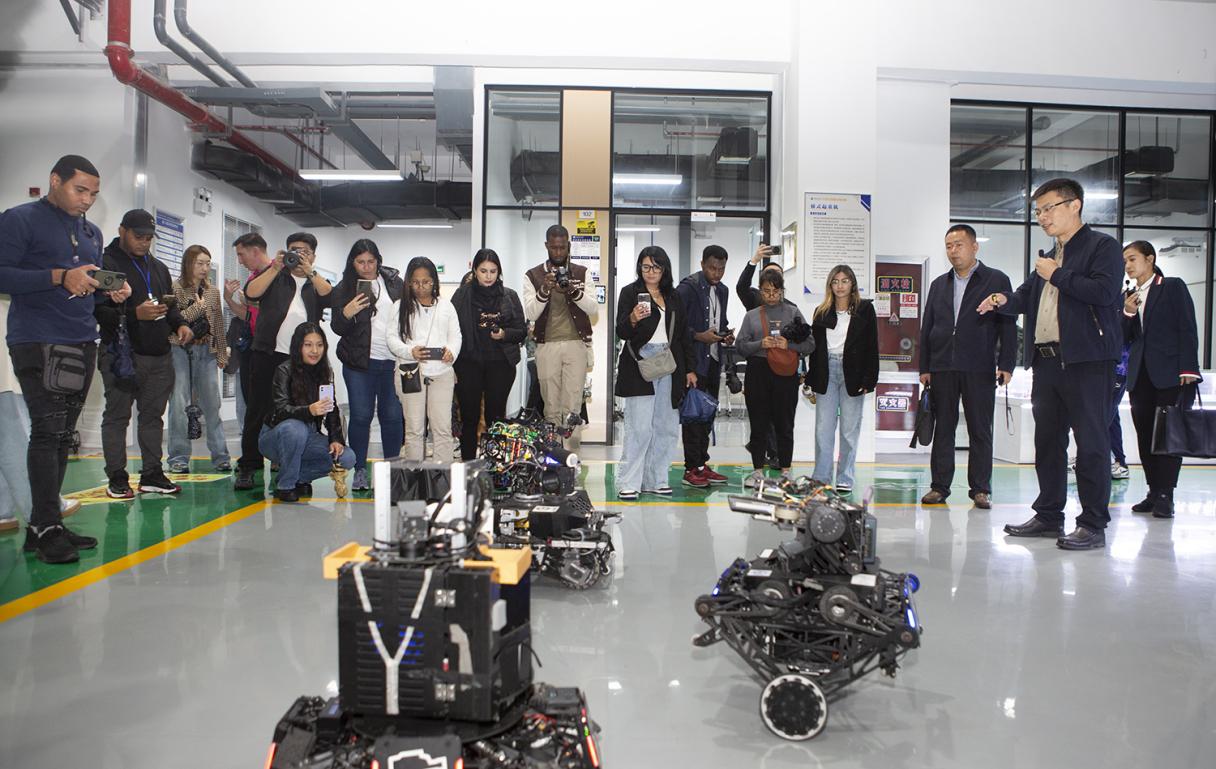
Speech by CUMT leaders

Visiting State Key Laboratory for Fine Exploration and Intelligent
Development of Coal Resources

Visiting the Institute of Human Settlements and Sustainable Development,
the School of Architecture & Design

Visiting the Innovation Training Center for College Students
On October 17, the “Meet Jiangsu: Silk Road Youths Meet in Jiangsu” event was held at China University of Mining and Technology. Vice President Bian Zhengfu met with the delegation of more than 30 Latin American and Caribbean journalists.
Bian Zhengfu warmly welcomed the delegation of journalists from Latin America and the Caribbean. He briefly outlined CUMT’s history since its founding in 1909, highlighting its current academic infrastructure and openness to the world. He emphasized CUMT’s unwavering commitment to international cooperation and exchange, particularly educational cooperation with nations along the Belt and Road. He mentioned that CUMT has partnered with Chimborazo Polytechnic University in Ecuador to establish the Sino-Ecuadorian College of Mining, which aims to train mining professionals for Ecuador. In addition, the CUMT-UCASAL Joint Research Center for Bio-Mining and Soil Ecological Restoration has been established to promote synergy in the development of the mining industry and environmental remediation between the two nations. In addition, the Joint Laboratory of International Cooperation has been established with Buenos Aires Institute of Technology in Argentine, fostering close collaboration between scientists and researchers, generating notable achievements through joint research efforts.
The journalists then visited the State Key Laboratory for Fine Exploration and Intelligent Development of Coal Resources, the Institute of Human Settlements and Sustainable Development, the School of Architecture & Design, and the Innovation Training Center for College Students. At the State Key Laboratory for Fine Exploration and Intelligent Development of Coal Resources, Xiao Dong, Associate Researcher and Executive Director of the CUMT-UCASAL Joint Research Center for Bio-Mining and Soil Ecological Restoration, explained the scientific research cooperation and progress, and conducted a live demonstration of bio-mining and bio-hydrogen production technology. Then, at the School of Architecture & Design, Deputy Director Yao Gang took the delegation on a tour of the Habitat Architecture Exhibition, thoroughly explaining CUMT’s specific research efforts and related practices in areas such as mining city transformation and renewal planning, sustainable energy development and utilization, green ecology and human habitat improvement. Finally, at the Innovation Training Center for College Students, Director Li Wei introduced the Center’s work on electromechanical equipment intelligence, machine vision applications, fault diagnosis and life prediction. In addition, the advanced robotics technology and A-type robot innovations of CUMT’s CUBOT, as well as CUMT’s cutting-edge AR intelligent system, were displayed.
In addition, Prof. Huang Bingxiang, Director of the State Key Laboratory for Fine Exploration and Intelligent Development of Coal Resources, Prof. Chen Hao of the School of Electrical Engineering, and Prof. Cohen Jason Blake of the School of Environment and Spatial Informatics were interviewed by the delegation. They shared insights into their scholarly endeavors and international collaborations with academic institutions in Latin America and the Caribbean. In addition, CUMT’s international students from Colombia, El Salvador, Venezuela, and Uruguay were interviewed by the delegation about their academic study and personal experiences while living in China.
Nicholas, an editor from Argentina’s Clarín, expressed great pleasure in visiting China University of Mining and Technology. He was especially pleased to learn about CUMT’s extensive cooperation with two prominent Argentine universities, its establishment of laboratories and its concrete efforts to reduce carbon emissions. Marguerite, a veteran reporter for the El Salvador-based Grand Vision Media Group, commented on China’s distinctive architectural skills. She expressed great interest in the traditional building models on display at the School of Architecture & Design. This visit, she emphasized, not only gave her an insight into traditional Chinese architectural styles, but also facilitated her understanding of modern design philosophies, particularly those related to the revitalization and transformation planning of mining cities. Paul, representing Venezuela's influential Cigaraya Radio and Television Station, marveled at his encounter with the AR Intelligent System. Admitting that it was his first experience with such a fascinating technology, he promised to intensify promotional efforts upon his return to foster the desire of Latin American youth to visit China frequently for educational exchanges and intellectual stimulation.